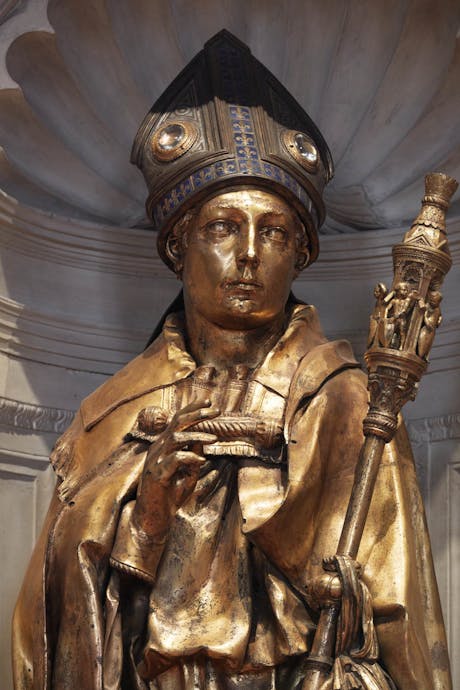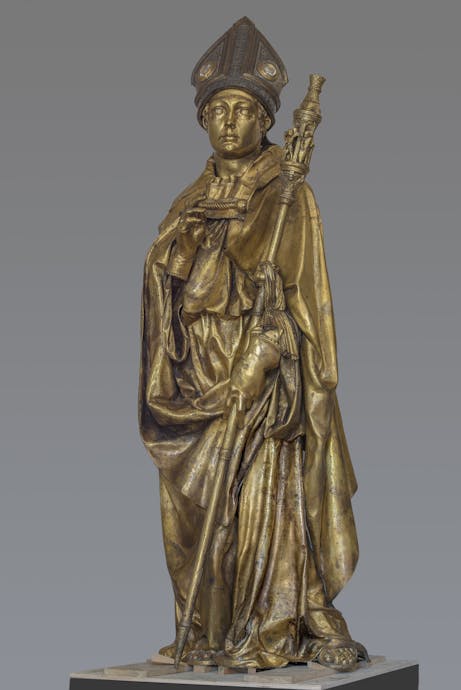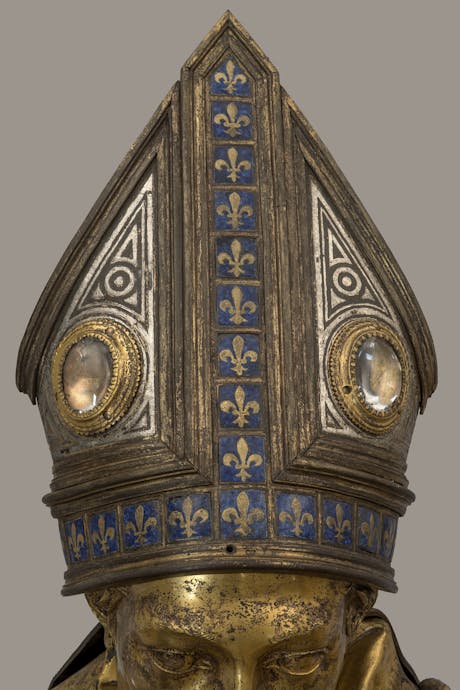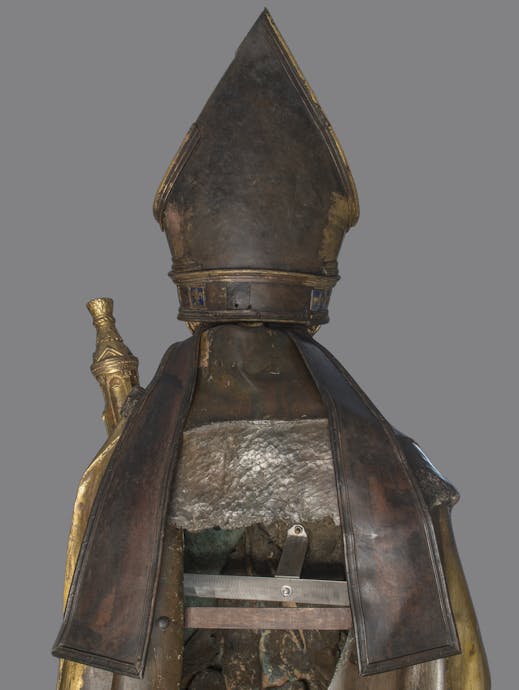Donatello
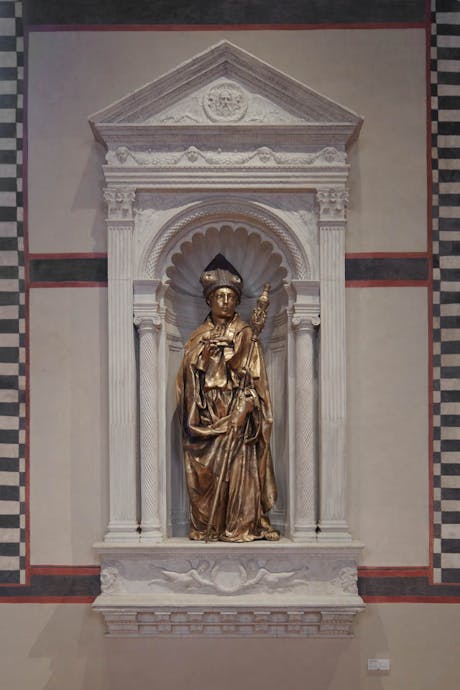
Artist: Donatello (Donato di Niccolò di Betto Bardi; Florence 1386-1466)
Title: St. Louis of Toulouse
Date: 1418-1425
Material and technique: gilt bronze; silver, enamels and rock crystals
Dimensions: 285 × 101 × 78 cm
Position: Refectory
The Parte Guelfa commissioned this statue of St. Louis of Toulouse from Donatello, who made it between 1418 and 1425. Removed before 1460 following the transfer of the niche to the Tribunale della Mercanzia, it was moved to Santa Croce and placed over the main door of the church some time before 1510.
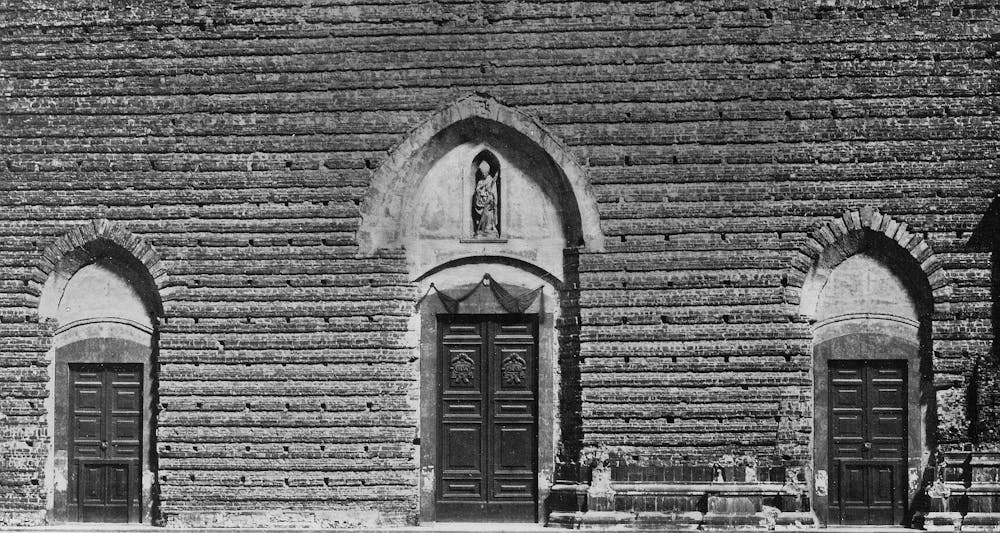
Detail of Santa Croce façade, before 1859. (Alinari photo)
Moved again in 1859 prior to the construction of the new façade, the statue was first placed on the inner façade before being sent to the museum in 1908 for display in an ædicula that was a cast of the Orsanmichele original, also by Donatello.
The statue was damaged in the flood of 1966 and subsequently restored, the process confirming Donatello's experimental spirit and revealing that he cast it in ten main pieces which he then gilded with a mercury-based amalgam, before assembling them around a core by setting them next to one another so that they overlapped.
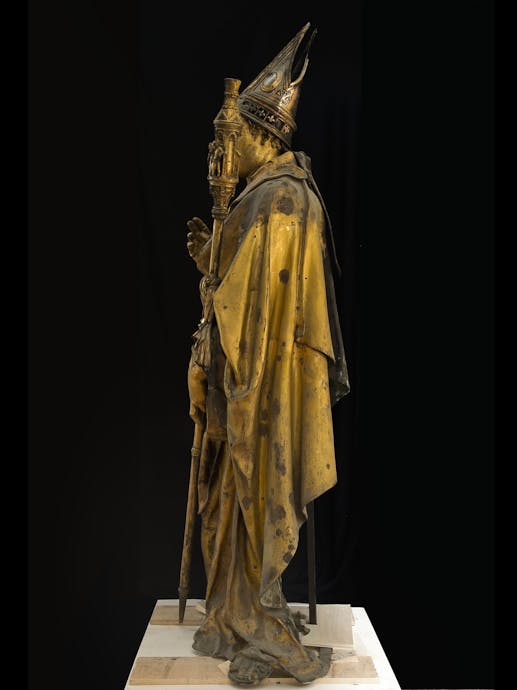
St. Louis before restoration in 2012
The statue, Orsanmichele's only gilded bronze work and the first bronze sculpture almost three metres tall to be cast since ancient times, cost an exorbitant 3,000 florins in material and 449 florins for the artist and his assistants.
According to Vasari, when Donatello was accused of making the figure look clumsy, he replied that "he had made it so of set purpose, seeing that the Saint had been clumsy to give up his throne and become a monk", a reference to the Louis of Anjou's decision to yield the Kingdom of Naples to his younger brother Robert in order to become a Franciscan friar, before being appointed bishop of Toulouse. The saint, with his delicate adolescent features, is shown imparting a timid blessing.
The skill with which his mitre and crosier were executed reminds us that Donatello was apprenticed to Ghiberti. The mitre is adorned with enamels with the fleur de lys of France and rock crystals, while the crosier (which has lost its crook) has winged putti in its temple-shaped knop: the first instance of the sculptor emulating the classical style with a nude child, known as a spiritello, in the round.
